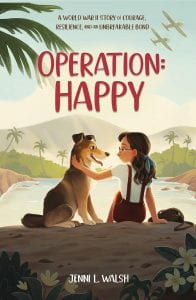 Fleming, Candace. The Enigma Girls: How Ten Teenagers Broke Ciphers, Kept Secrets, and Helped Win World War II. Scholastic Focus, 2024. 978-1-338-74957-1. $19.99. 371 p. Grades 6-9.
Fleming, Candace. The Enigma Girls: How Ten Teenagers Broke Ciphers, Kept Secrets, and Helped Win World War II. Scholastic Focus, 2024. 978-1-338-74957-1. $19.99. 371 p. Grades 6-9.
At the start of World War II, the British Secret Intelligence Service’s Government Code and Cipher School relocated its headquarters to an estate 50 miles outside of London. Bletchley Park (or Station X) became a secret encampment for the country’s intelligence operations. Young women were hired to assist in gathering, deciphering, translating, cataloging, and transmitting German, Italian, and Japanese communications for British intelligence officers. By 1945 nearly 7,000 women worked round the clock at Bletchley Park to defeat the Axis powers. The majority of these women were under the age of 21. Hired partly because they were young and unmarried, each of these women brought valuable skills to the endeavor. Some were math geniuses with few prospects for employment, others were fluent in German or other languages, many had an interest in machinery and the dawn of mechanical and then electric computers. All were fabulous at keeping a secret. All were true patriots committed to defeating Hitler. This narrative nonfiction selection tells the stories of 10 of these brave women. Patricia Owtram, age 18, joined the Women’s Royal Naval Service (known as The Wrens) and was sent to one of many Y Stations throughout England. Patricia listened on the wireless for transmissions in morse code and transcribed what she heard. These intercepted messages had been sent using a cipher machine called Enigma. The Germans changed the Enigma cipher settings every day to prevent the Allies from cracking top secret communications. These transcribed messages were sent to be deciphered by breakers such as Mavis Lever, age 18, who worked tirelessly to crack the always changing ciphers. Once the day’s new cipher settings were discovered, the messages were sent to women like Jane Huges. At the age of 18, Jane was desperate to escape her upper crust debutante life. Jane, who spoke fluent German, would type the deciphered messages into German using a Typex machine. Messages with low clearance were often sent using ciphers published in books. Women like Gwen Davies, age 18, solved these word problems. Top secret and every day communications were then sent to yet another department to be translated into English and written on notecards. These cards were cataloged and cross-referenced by women like Sarah Norton, age 18, with ties to the Royal Family. As the war wore on, new technology was invented to make this process more efficient. Large, mechanical computing machines called Bombes could break the Enigma cipher much more quickly than humans. The Bombes were calibrated by women like Ann Williamson, age 20, who had graduated from Oxford in mathematics. The Bombes were maintained by women like Diana Payne, age 17. As D-Day approached the Germans started transmitting a new type of cipher that was extremely difficult to solve. The first electronic computer, the Colossus, was invented. Joanne Chorley, age 18, was one of the women who worked these complicated early computers. Marion Graham, age 18, worked deciphering Japanese transmissions. Charlotte Vine-Stevens, age 20, paraphrased the Japanese to English and indexed the information. These women were forbidden from speaking about their jobs to anyone – even to other employees at Bletchley Park. Despite knowing significant pieces of valuable intelligence, such as the bombing of the Bismarck and the preparations for D-Day, these brave women divulged nothing. Even long after the war they continued to keep their secrets. Throughout the book the author has included chapters entitled “Top Secret: If you Were a Code and Cipher Hacker” where the how-tos of cipher hacking are detailed and explained. Historic photographs of the era illustrate every chapter.
THOUGHTS: A fascinating look at the complex process used to gather intelligence during WWII. The narration carefully weaves details from each woman’s personal and professional lives into a story about bravery and loyalty. Well researched, the book includes end-notes, bibliographic sources and more. An excellent example of thorough and responsible research as well as captivating narrative nonfiction writing for middle school students.
940.54 World War II
 Smith, Sherri L. Pearl: A Graphic Novel. Illustrated by Christine Norrie. Graphix, 2024, 978-1-338-02943-7. $24.99. 132 p. Grades 5-8.
Smith, Sherri L. Pearl: A Graphic Novel. Illustrated by Christine Norrie. Graphix, 2024, 978-1-338-02943-7. $24.99. 132 p. Grades 5-8.








